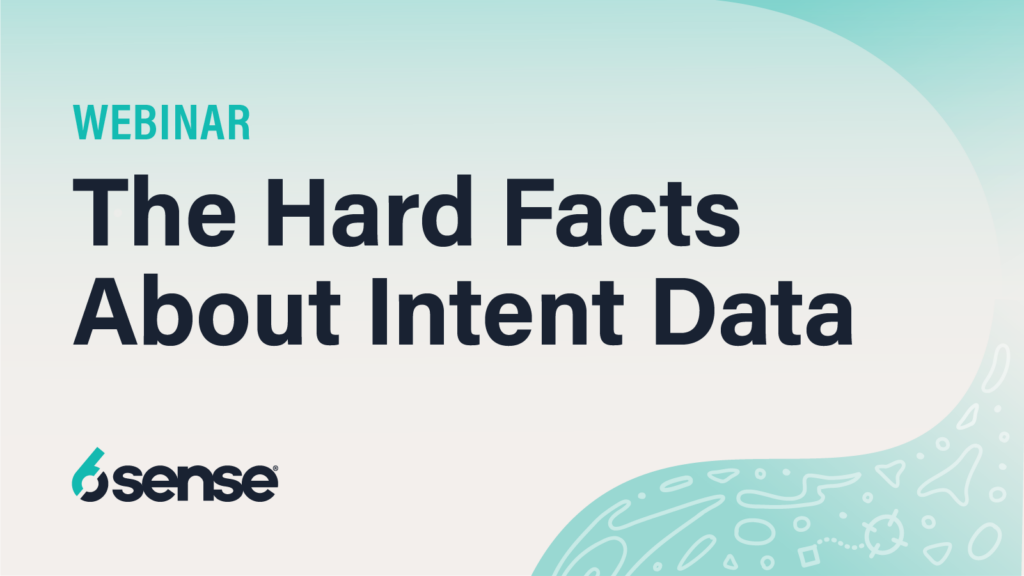It’s an all-too-common experience in the world of B2B marketing: a campaign doesn’t deliver on expectations … or perhaps pipeline numbers start to slip … or your revenue team isn’t hitting its revenue goals. What went wrong? It’s a mystery.
Less often, but equally mysterious, is when you’ve absolutely crushed a campaign — almost like pulling off the perfect art heist (eat your heart out, Thomas Crown) — and you want to analyze how you successfully dodged all those laser tripwires and pulled it off.
It’s moments like this when you need to channel your inner detective, snap on those white latex gloves, and break out the fingerprint kit.
Thankfully, today’s marketers aren’t in the dark like the film noir gumshoes of old. We’re more like CSI: technicians, relying on far more nuanced evidence than old standbys like pageviews or click-throughs. We can see details that truly determine how our campaigns influence the entire buying journey.
6sense is the key tool that turns marketers from hapless detectives into the next Hercule Poirot by delivering:
- More detailed insights into campaign performance like buying stage movement and pipeline influenced/generated.
- The ability to measure which campaigns — and which audiences — have generated the most engagement.
- Tools to use your past wins as a blueprint for future campaigns.
Here’s how to revisit the scene of the crime campaign to get the intel you need to make your efforts even more effective.
High-Level Analyzing — Taping off the Scene
Conducting analysis based on audience segments is like setting up the caution tape on the perimeter of that crime scene. You’re clearly defining the parameters of where you want to investigate. Some of the ways you might segment your audiences to extract helpful info include:
- Ideal Customer Profile (ICP)
- Company size (for instance, Enterprise vs. Commercial)
- Buying stage
- Industry (an example: FinServ vs. Manufacturing)
If you’re a 6sense customer, you can analyze the performance of an entire segment quite easily and efficiently, arming you with a high-level understanding of how a certain audience is performing.
You can find answers to investigative questions like Are we engaging with our ICP enough? What campaigns and sources are performing the best with this particular audience?
At this high level, 6sense users can quickly understand:
- How many accounts moved their buying stage forward
- The amount of new pipeline driven within this segment
- The value of won deals that came from this segment
As a marketing detective, you now have a solid foundation of understanding your case.
Drill-Down Analyzing — Dusting for Fingerprints
Once you’ve cordoned off the area and gotten the big picture, the real work begins. That means it’s time to analyze the scene at a granular level. If picking your segment and analyzing overall performance is taking a bird’s eye view of your taped off area, this next stage is like getting on hands and knees to dust for fingerprints and uncover a motive.
6sense gives marketers full control to drill down into segment performance, empowering them to uncover the full results of their efforts.
With 6sense’s in-depth segment analyzation capabilities, you can reveal:
- The individual CRM and MAP campaigns that have driven the most engagement
- The top keywords and topics making the most impact for this audience
- The specific accounts within the segment and how they’ve progressed and engaged
This deeper dive into your segment helps you start to piece together the individual actions that have led to your broader performance. It’s like uncovering the motive for a crime — now you know which activities had a big impact and which were red herrings.
Retrospective Analyzing — Round up the Usual Suspects
Pattern-recognition is an incredibly important skill for any detective. And to understand the situation, investigators must sometimes work backwards.
This is no different for marketers. Instead of always analyzing an audience based on things like buying journey or industry, you can start from the end goal: analyzing a segment of your winning deals.
Creating a segment for your big wins can help you uncover:
- The campaigns that had the most influence in those deals
- The products or services they gravitated toward
- The types of accounts that show up more in your wins than others
Saima Rashid, SVP of Marketing and Revenue Analytics, recommends this strategy as a quarterly exercise to identify easy-win opportunities. The activities that led to those wins “are the types of activities that you might want to put more resources into… and then things that don’t show up in this report are probably not something you want to put any more resources or energy into,” she says.
Every marketer should be proud of their wins, but those wins aren’t just good for the much-deserved accolades and sense of accomplishment. Your wins can reveal a lot about your overall strategy. Rounding up the usual suspects, like the campaigns you know deliver real results time and time again, every once in a while and interrogating them can lead to big results later.
Conclusion
Marketing — like detective work — is both a science and an art. No matter how much creativity goes into a campaign, sometimes it can fall flat. But that doesn’t mean it was a failure. That just means it’s time to put on your detective hat and start investigating.
6sense makes it easy to put together all the clues by:
- Providing macro-level performance of your audiences
- Revealing smaller trends that inform decision-making
- Allowing you to learn from your wins
Marketers that take the time to study their performance will be rewarded with long-term results and closing the book on more deals.






